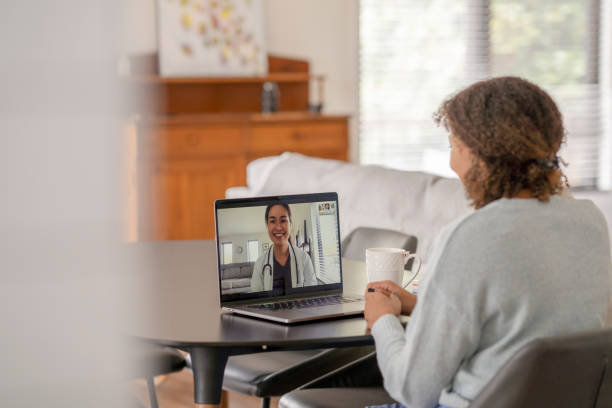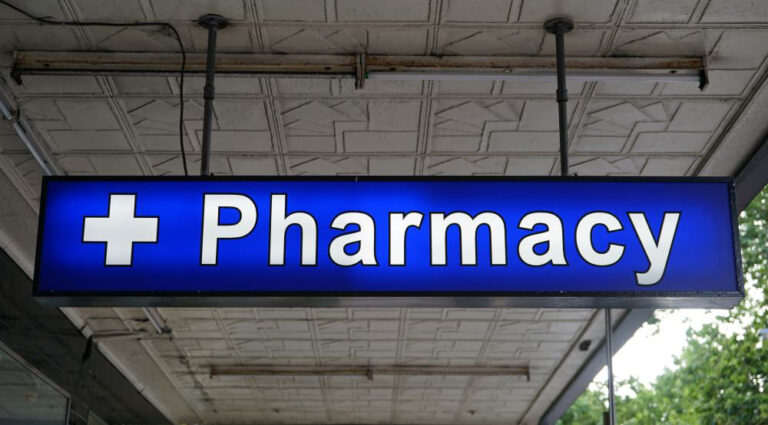10 Evidence-Based Off-Label Uses of Modafinil (Provigil®)
Modafinil is a wakefulness-promoting medicine approved for narcolepsy, obstructive sleep apnea, and shift work disorder. Doctors sometimes prescribe it for other conditions when the potential benefits outweigh the risks and when evidence supports that choice. This guide summarizes what the research shows and where the data are still limited, so readers can discuss options with a clinician using accurate, plain language (U.S. Food and Drug Administration, 2015; Greenblatt & Adams, 2023).
What modafinil is and how it works
Modafinil is a central nervous system stimulant with lower traditional stimulant effects compared to amphetamines. It likely works by modestly increasing dopamine and influencing orexin and histamine systems that regulate wakefulness. Typical adult dosing is 200 mg once daily, timed to the morning or about one hour before a night shift, based on the approved uses (U.S. Food and Drug Administration, 2015; Greenblatt & Adams, 2023).
Approved uses vs off-label uses
Approved uses are narcolepsy, obstructive sleep apnea with residual sleepiness despite adequate continuous positive airway pressure, and shift work disorder. Off-label uses are any other conditions not listed on the official label. Off-label prescribing can be appropriate when supported by high-quality evidence, within a research protocol, or in exceptional clinical situations, and should include informed consent about knowns and unknowns (Gazarian et al., 2006; Rusz et al., 2021).
How strong is the evidence overall
Randomized and controlled studies exist for some conditions, but many off-label areas rely on small trials or mixed findings. Several early reports suggested benefit, yet later controlled trials sometimes found no advantage over placebo, especially for fatigue-related outcomes. Expect modest effects at best and discuss alternatives with your clinician (Kumar, 2008; Greenblatt & Adams, 2023).
10 off-label uses supported by research summaries
Evidence notes are brief and focus on what patients ask most often. Always review safety and interactions first.
1) Traumatic brain injury fatigue and sleepiness
Small studies and clinical experience suggest reduced daytime sleepiness, but randomized data are limited and findings are inconsistent. Consider trial only with close follow-up for mood and sleep changes (Teitelman, 2001; Kumar, 2008).
2) Multiple sclerosis-related fatigue
Some trials show modest reductions in fatigue, while others do not. Benefits, if present, are usually small. Non-drug strategies and other medicines should also be discussed (Kumar, 2008; Greenblatt & Adams, 2023).
3) Parkinson’s disease fatigue or sleepiness
Results are mixed and sample sizes are small. Any benefit appears modest and not consistent across studies. Monitor for anxiety, insomnia, and blood pressure changes (Kumar, 2008).
4) Adult attention-deficit hyperactivity disorder (ADHD)
Several studies report improved attention and executive function, but overall findings are mixed, and modafinil is not approved for ADHD. Skin reactions in youth led regulators to avoid pediatric use. Adults should consider approved ADHD treatments first (Kumar, 2008; Greenblatt & Adams, 2023).
5) Major depressive disorder augmentation for low energy and hypersomnia
Some studies support improved energy and reduced sleepiness when added to antidepressants, yet data are not uniform. Use as an add-on may be reasonable in select patients after standard options are tried (Kumar, 2008).
6) Bipolar depression augmentation
A trial excluding patients prone to stimulant-induced mania found improved depressive symptoms. Careful screening and mood monitoring are essential (Kumar, 2008).
7) Cocaine use disorder support
Evidence is mixed. Some studies suggest help with alertness and possibly cravings, others show no clear benefit. This should remain a specialist decision within comprehensive treatment (Kumar, 2008; Greenblatt & Adams, 2023).
8) Chronic fatigue syndrome or myalgic encephalomyelitis fatigue
Trials are small and inconsistent. Some patients report short-term alertness, but controlled studies often show no advantage over placebo. Discuss expectations and non-drug care first (Kumar, 2008).
9) Medication-induced sedation in psychiatric care
Early clinical reports describe improved daytime functioning when antipsychotics or mood stabilizers cause sedation. This is based largely on open-label experience, so shared decision-making is important (Teitelman, 2001).
10) Cognitive performance in healthy or high-demand settings
In sleep-deprived people, modafinil improves alertness and attention. In well-rested healthy adults, cognitive effects are inconsistent. It should not replace sleep hygiene or approved treatments for diagnosed sleep disorders (Kumar, 2008; Greenblatt & Adams, 2023).
Safety, side effects, and interactions
- Serious skin reactions can occur, including Stevens-Johnson syndrome. Stop the medicine and seek urgent care if you develop a rash, blisters, fever, or mouth sores (U.S. Food and Drug Administration, 2015).
- Allergic reactions, multi-organ hypersensitivity, anxiety, irritability, mania, or psychosis can occur. Call your clinician if mood or behavior changes appear (U.S. Food and Drug Administration, 2015).
- Common side effects include headache, nausea, decreased appetite, anxiety, and insomnia (U.S. Food and Drug Administration, 2015).
- Drug interactions include reduced effectiveness of steroidal contraceptives and interactions via cytochrome P450 enzymes, especially CYP3A4 and CYP2C19. Use a reliable non-hormonal contraceptive while taking modafinil and for one month after stopping, and review all medicines with your clinician or pharmacist (U.S. Food and Drug Administration, 2015).
- Use lower doses or extra caution in liver disease, kidney disease, and older adults. Modafinil is not approved for children due to serious rash risk (U.S. Food and Drug Administration, 2015; Greenblatt & Adams, 2023).
How common is off-label use
More than half of U.S. modafinil prescriptions during 2002 to 2009 were written for off-label reasons, especially in psychiatry and primary care. This highlights the need for careful evidence review, documentation, and informed consent for each patient (Peñaloza et al., 2013).
Shared decision-making and informed consent
Good off-label practice means weighing evidence quality, clarifying goals, documenting risks and benefits, and agreeing on a stop point if benefits do not appear. This approach improves safety and aligns with best practice recommendations for off-label care (Gazarian et al., 2006; Rusz et al., 2021).
References woven into the text
Key clinical and regulatory sources cited above include an evidence-based review of studies up to 2008, updated clinical summaries, a national U.S. prescribing analysis, an early clinical letter, and the official U.S. label for safety and dosing (Kumar, 2008; Greenblatt & Adams, 2023; Peñaloza et al., 2013; Teitelman, 2001; U.S. Food and Drug Administration, 2015). Policy and safety context come from recent overviews of off-label practice (Gazarian et al., 2006; Rusz et al., 2021).
FAQ
Can I take modafinil for energy if I do not have a sleep disorder
Modafinil may improve alertness when you are sleep-deprived, but effects in well-rested healthy adults are inconsistent. Talk to a clinician first, and do not use it to replace sleep or to self-treat fatigue without evaluation (Kumar, 2008; Greenblatt & Adams, 2023).
Is modafinil safe to use with birth control pills
Modafinil can reduce the effectiveness of hormonal contraceptives. Use a reliable non-hormonal method while taking it and for one month after stopping (U.S. Food and Drug Administration, 2015).
Can modafinil be taken at night
For shift work disorder, it is taken about one hour before the shift. Taking it late in the day outside of that setting can cause insomnia. Ask your clinician how to time doses for your schedule (U.S. Food and Drug Administration, 2015).
Does modafinil work for chronic fatigue syndrome
Evidence is limited and mixed. Some people feel more alert, but controlled trials often show no better results than placebo. Discuss expectations and a full care plan with your clinician (Kumar, 2008).
References
- U.S. Food and Drug Administration. (2015). PROVIGIL® (modafinil) tablets, for oral use, C-IV [Prescribing information]. U.S. Department of Health and Human Services. https://www.accessdata.fda.gov/drugsatfda_docs/label/2015/020717s037s038lbl.pdf
- Greenblatt, K., & Adams, N. (2023, February 6). Modafinil. In StatPearls [Internet]. StatPearls Publishing. https://www.ncbi.nlm.nih.gov/books/NBK531476/
- Peñaloza, R. A., Sarkar, U., Claman, D. M., & Omachi, T. A. (2013). Trends in on-label and off-label modafinil use in a nationally representative sample. JAMA Internal Medicine, 173(8), 704–706. https://doi.org/10.1001/jamainternmed.2013.2807
- Teitelman, E. (2001). Off-label uses of modafinil. American Journal of Psychiatry, 158(8), 1341. https://doi.org/10.1176/appi.ajp.158.8.1341
- Kumar, R. (2008). Approved and investigational uses of modafinil. Drugs, 68(13), 1803–1839. https://doi.org/10.2165/00003495-200868130-00003
- Rusz, C. M., Ősz, B. E., Jîtcă, G., Miklos, A., Bătrînu, M. G., & Imre, S. (2021). Off-label medication: From a simple concept to complex practical aspects. International Journal of Environmental Research and Public Health, 18(19), 10447. https://doi.org/10.3390/ijerph181910447
- Gazarian, M., Kelly, M., McPhee, J. R., Graudins, L. V., Ward, R. L., & Campbell, T. J. (2006). Off-label use of medicines: Consensus recommendations for evaluating appropriateness. Medical Journal of Australia, 185(10), 544–548. https://doi.org/10.5694/j.1326-5377.2006.tb00689.x








